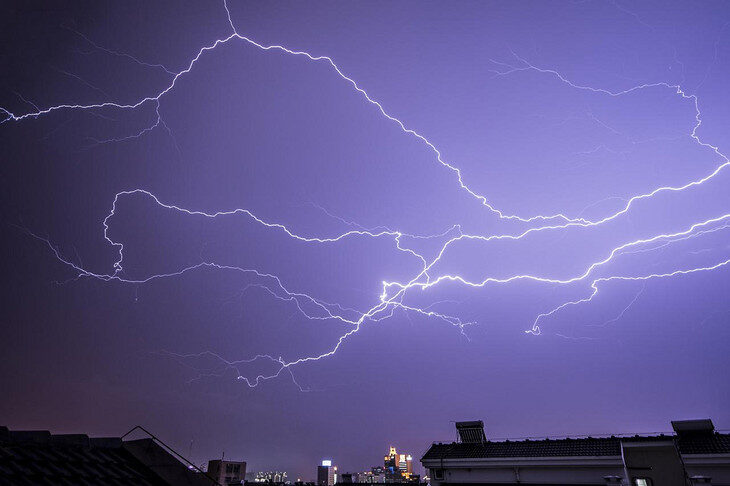
© Douglas M. Paine
Scientists have steered lightning bolts with lasers for the first time in the field, according to a demonstration performed during heavy storms at the top of a Swiss mountain.
The feat, which involved firing powerful laser pulses at thunderclouds over several months last year, paves the way for laser-based lightning protection systems at airports, launchpads and tall buildings."Metal rods are used almost everywhere to protect from lightning, but the area they can protect is limited to a few metres or tens of metres," said Aurélien Houard, a physicist at École Polytechnique in Palaiseau. "The hope is to extend that protection to a few hundred metres if we have enough energy in the laser."
Lightning bolts are huge electrical discharges that typically spark over two to three miles. The charge carried in a bolt is so intense that it reaches 30,000C, about five times hotter than the surface of the sun. More than a billion bolts strike Earth each year, causing thousands of deaths, 10 times as many injuries, and damage that runs into tens of billions of dollars.
Traditional lightning rods date back to Benjamin Franklin who used to chase thunderstorms on horseback before his famous kite experiment in 1752. But in more recent times, scientists have looked for other ways to protect buildings and objects from damaging strikes.
Writing in the journal
Nature Photonics, Houard and colleagues in Switzerland describe how they carted a powerful laser to the top of the Säntis mountain in north-eastern Switzerland and parked it near a 124m-high telecoms tower that is struck by lightning about 100 times a year.
The scientists waited for storms to gather and between July and September last year, fired rapid laser pulses at thunderclouds for a total of more than six hours.
Instruments set up to record lightning strikes showed that the laser diverted the course of four upward lightning discharges over the course of the experiments.Only one strike, on 21 July, happened in clear enough conditions for the researchers to film the path of the lightning from two directions using high speed cameras several kilometres away.
The footage shows that the lightning bolt followed the laser path for about 50 metres, suggesting that the pulses helped steer the strike.The laser diverts lightning bolts by creating an easier path for the electrical discharge to flow along. When laser pulses are fired into the sky, a change in the refractive index of the air makes them shrink and become so intense that they ionise air molecules around them. This leads to a long chain of what the researchers call filaments in the sky, where air molecules rapidly heat up and race away at supersonic speeds, leaving a channel of low density, ionised air.
These channels, which last for milliseconds, are more electrically conductive than the surrounding air, and so form an easier path for the lightning to follow.The laser is powerful enough to be a risk to the eyes of overflying pilots, and during the experiments air traffic was closed over the test site. But the scientists believe the technology could still be useful, as launchpads and airports often have designated areas where no-fly restrictions apply. "It's important to consider this aspect of safety," said Houard.
More powerful lasers that operate at different wavelengths could guide lightning over longer distances, he added, and even trigger lightning before it becomes a threat. "You avoid it going somewhere else where you cannot control it," Houard said.
"The cost of the laser system is very high compared with that of a simple rod," said Professor Manu Haddad, director of the Morgan-Botti Lightning Laboratory at Cardiff University. "However, lasers could be a more reliable way to direct the lightning discharge, and this may be important for the lightning protection of critical ground installations and equipment."
Reader Comments